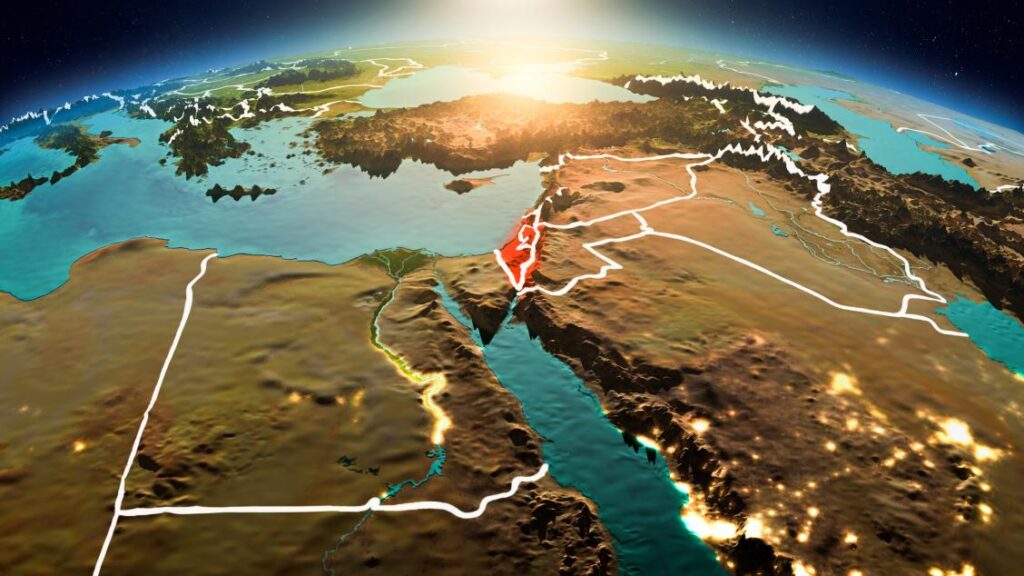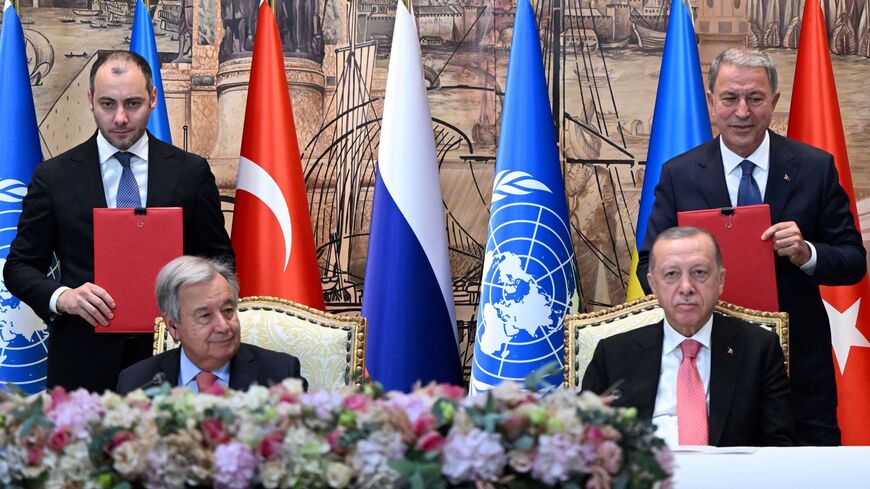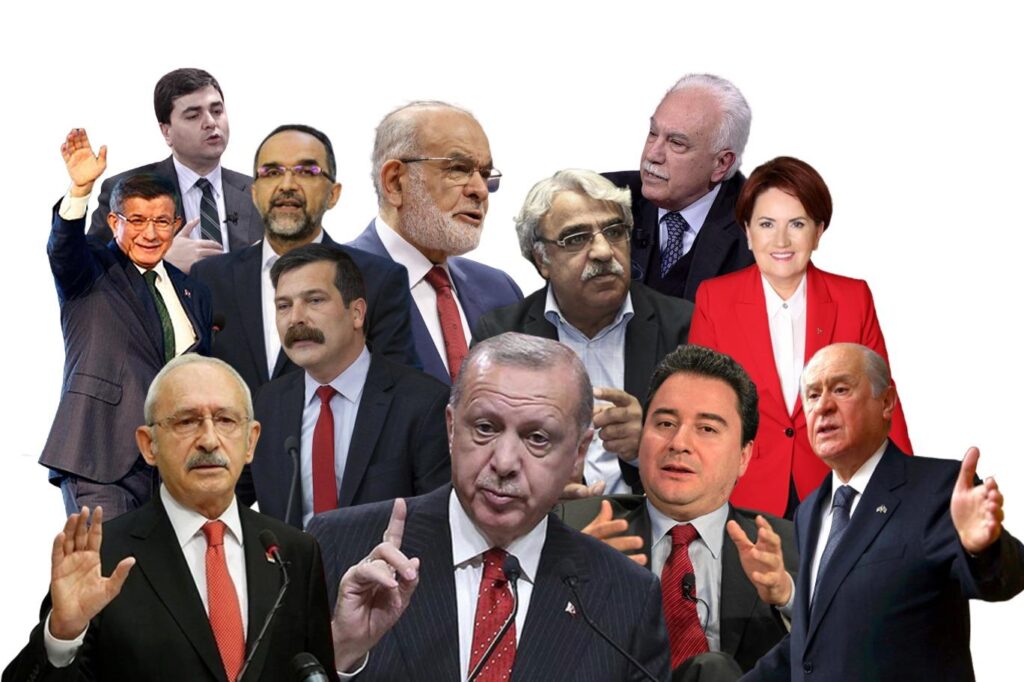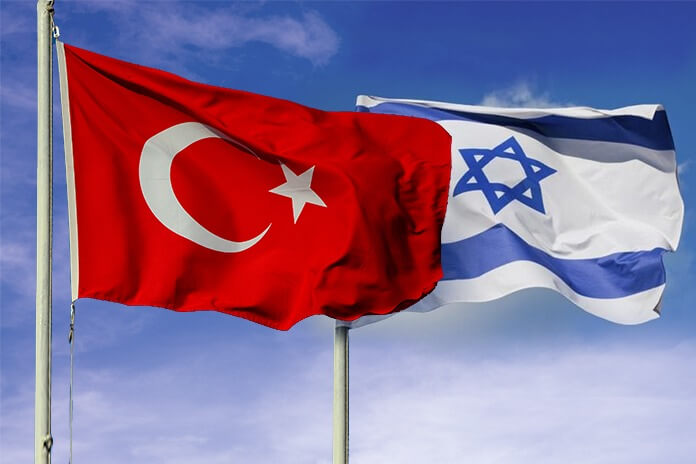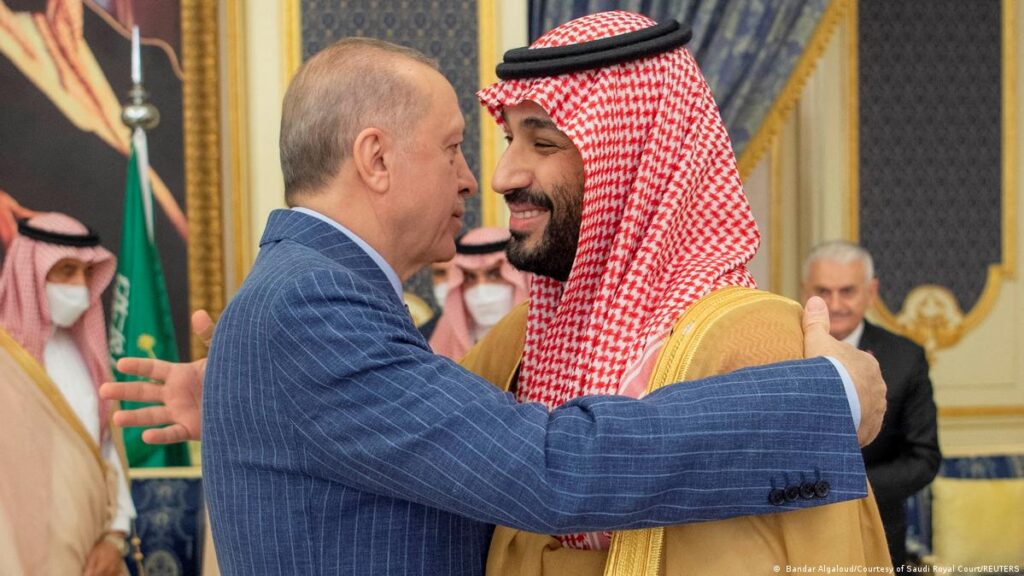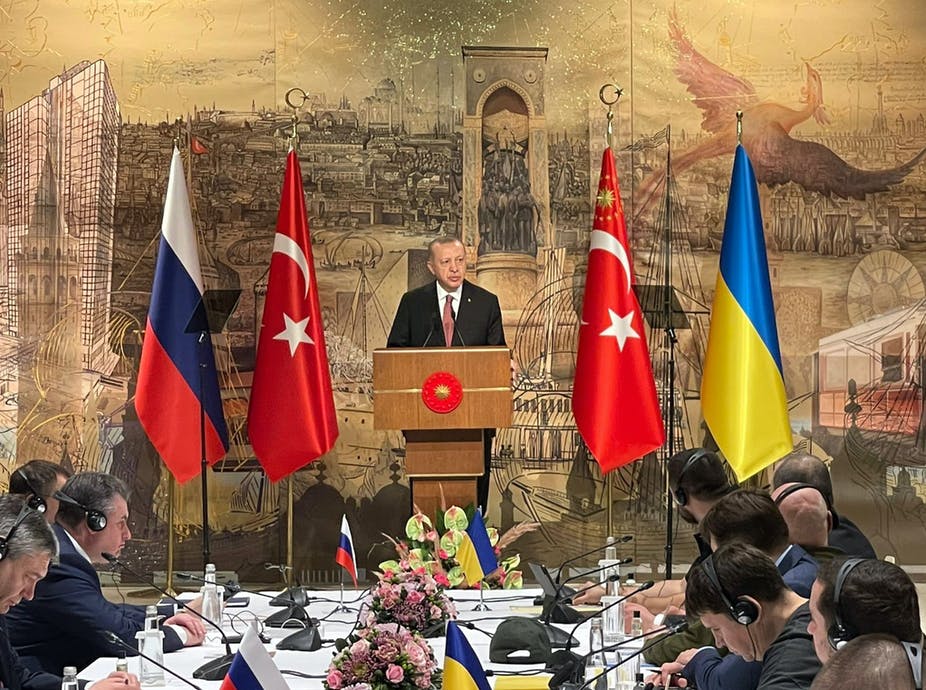Why Montreux Convention is Important for the Black Sea Security and Stability?
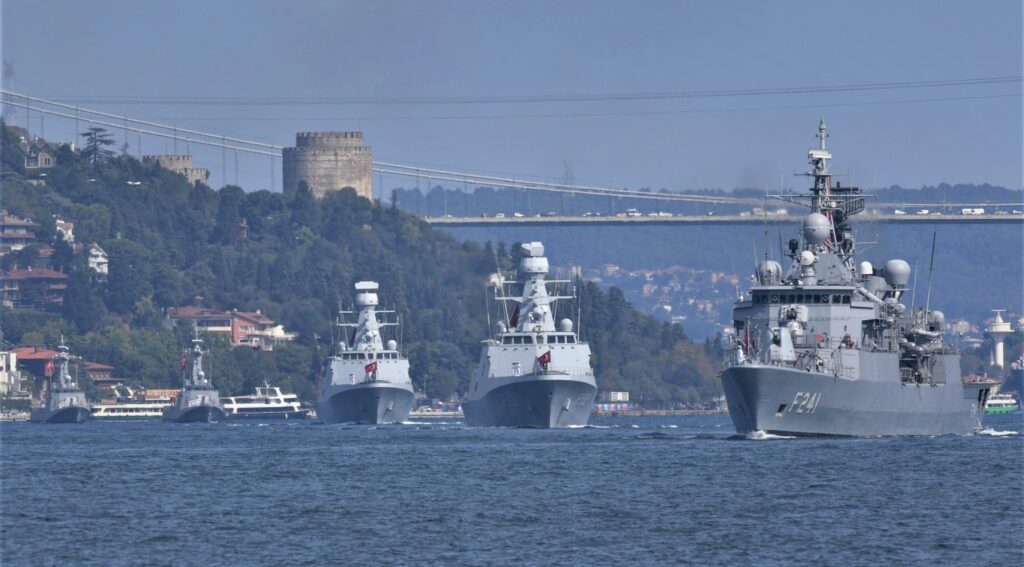
MONTREUX CONVENTION AND MARITIME SECURITY
OF THE BLACK SEA REGION
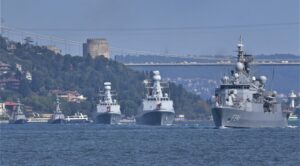
By ANATOLIA REPORT
March 2022
The maritime security of the Black Sea stands as an important factor in the buildup of a regional dimension in the region. This importance not only arises from the fact that this issue is perceived as a vital domain by the leading regional powers, but also it has considerable impact on the prospects of the future of efficient regional cooperation and the Euro Atlantic integration.
Black Sea maritime security represents an essential part of the entire Black Sea Region. Main risks and threats which can be identified within maritime domain are asymmetric. The Black Sea and the region might poses as traffic zones for drugs, weapons, dangerous materials and human beings coming mainly from Central Asia. Afghanistan and non-state enclaves of the region, heading to Western Europe. The illegal maritime traffic from the Black Sea Region basin entering Europe especially through Turkish and Ukrainian harbors has an increasing tendency. The rise of fundamentalist movements, social and economic problems, and ethnic, and ethnic conflicts increase the risk of terrorist activities in this part of the world.
Even the most part of this kind of risks cross the region on land routes, the last statistics[1] show more frequent use maritime and riparian means of transportation under different state flags (from small fishing boats up to big cargo ships) and also under independent sailors shipping services and companies for illegal traffic of drugs and conventional weapons but also of sensitive materials and product which can be used for both, military and civilian purposes.
At the same time, Turkish statistics[2] highlight an accelerate increase of maritime traffic, especially oil tankers, through Turkish straits and across Black Sea, which amplifies asymmetric risks and shipping security. Transport of oil product is mainly carried out by Russian ships, 70% of this being designated by European countries.
The Black Sea region has historically been a zone of contention between the littoral states surrounding it and leading global powers. Until the rise of the Russian Empire, it was an inner lake of the Ottoman Empire. With the nineteenth century, the Black Sea witnessed fierce hostilities between these two empires and the great powers of the era often interfered in Black Sea politics.
Following the disintegration of the Ottoman and Russian Empires and with the implementation of the Montreux Convention, the legal status of the Turkish straits was determined and hence the naval regime of the Black Sea was finalized. In fact, even during tense period of the Cold War, thanks to Montreux Convention, the Black Sea was “kept out of major international focus” and “remained largely immune to confrontation between the two superpowers.”[3] In this sense, a certain balance was set in the Black Sea which basically avoided the resurfacing of historical tensions.
The Montreux Convention is considered by the both regional powers Turkey and Russia as a safeguard against the militarization and destabilization of the Black Sea waters, historically regarded as a strategic spot for Turkish and Russian national security. Indeed, since its ratification, for the last 78 years it has protected the interests of the Black Sea states against outside powers and provided a legal framework to maintain international and regional stability and peace. In this sense, Russia and Turkey have a common interest in safeguarding the Treaty and in objecting to any suggestions for its modification.
As Russia’s Ambassador to Turkey, Vladimir Ivanovsky said at a press conference :
“Russia and Turkey have one hundred percent the same approach on the Montreux Convention. We believe that this agreement complies with the needs of the today’s world. Both countries support the full implementation of the Montreux Convention, international agreement that is still in effect.”[4]
This balance and the legal regime of the straits and the Black Sea are fundamentally important for Turkey. The Montreux Convention confirms Turkish jurisdiction over the straits; Turkey’s control over the straits is internationally guaranteed. In addition, the Montreux Convention, together with the Lausanne Treaty are the founding documents of the Turkish Republic as a sovereign nation state. Furthermore, the status of the Turkish straits and Turkey’s implicit control over the Black Sea maritime activity enables Turkey to have a central place in the politics of the region which is currently dominated with globally important subjects such as the energy security, reform movements, frozen conflicts and new security threats including the struggle against terrorism[5].
Under these circumstances, Turkey, as a key and indispensable player in the region, has a Black Sea policy which is based on a clear distinction between maritime security and the wider Black Sea regional security issues. For Turkey, the Montreux Convention is vital to keeping the balance in the Black Sea maritime domain. The Convention is the single most important document that ensures maritime stability and avoids any confrontation between the littoral states[6]. In this sense, it is also critical in maintaining the balance between Turkey and Russia in the Black Sea, and hence helps to keep the improvement in Turkish-Russian relations on track[7].
A historical review of the Turkish Straits is necessary for a better understanding of the Montreux Convention.
The development of The Turkish Straits regime can be divided into two periods; The Ottoman Empire period and the Republic of Turkey period. International agreements on the Turkish Straits, until the Montreux Convention, can be investigated in three periods; the period of Turkish sovereignty (1453-1809), the period of regulation via bilateral agreements (1809-1841) and the period of multilateral agreements (1841-1923)[8].
Turkish Sovereignty (1453-1809)
After the conquest of Istanbul in 1453, the Turkish Straits came under the rule of the Ottoman Empire. Legally, this meant that the Ottoman Empire would decide which ships are allowed to pass from the Turkish Straits, prohibiting the passage of foreign flagged ships. Thus, after the Ottoman control of Bosphorus and Dardanelles, the Straits were closed to foreign ships and closure became the norm. The norm of “Closure”, which was enforced when the Ottoman Empire was strong, eroded in the early 18th century with the erosion of the Ottoman Empire[9]. Tsarist Russia’s deployment of a naval fleet in Azak Sea via seizing Azak Castle, in accordance with the Karlofca Treaty in 1699[10], was the first serious step towards changing the status quo in the Black Sea, and initiated a new period in the status of the Straits. Consequently, in time, other European states got involved in the Straits’ problem between the Ottoman Empire and Tsarist Russia. This caused the expansion of the problem and resulted in linking the sovereignty over the Straits to the approval of other states. With the Treaty of Kucuk Kaynarca in 1774, between the Ottoman Empire and Tsarist Russia, Russia acquired the right to maintain merchant ships in the Black Sea. That is; the right for trading and merchant ship passage from the Straits[11].
Regulation via Bilateral Agreements (1809-1841) The 1798 and the 1805 Ottoman-Russian Alliance Agreements granted free passage to the Russian warships, while closing the Straits to third parties[12]. However, this agreement was annulled because of war between the two states in 1807. According to the Kale-I Sultaniye (Sovereign Castle) Treaty, signed between the Ottoman Empire and Great Britain on 5 January 1809, the passage of foreign warships was prohibited unless The Sultan gave permission, (ferman). Tsarist Russia acquired free cruise in the Black Sea and passage right for the Straits as well as extensive trading rights after signing Edirne Agreement with the Ottoman Empire in 1829[13]. The provision in the Treaty of Hunkar Iskelesi which stated “in case Russia was attacked, the Ottoman Empire would close the Straits against Great Britain and France,” which was signed on 8 July 1833, gave Russia a major advantage in the Straits and increased its security in the Black Sea[14]. This was the last agreement in which the Ottoman Empire could exercise its sovereignty over the Straits.
Multilateral Agreements (1841-1923)
A new period had started for the Turkish Straits with the signature of the “London Straits Convention” on 13 July 1841. For the first time the status of the Black Sea and the Turkish Straits was regulated by multilateral agreement, bringing to an end the era of bilateral agreements[15]. Austria, Great Britain, France, Prussia, Russia and the Ottoman Empire were party to the agreement. The “London Straits Convention” is significant because, besides the fact that the Straits acquired an international status, the Ottoman sovereignty over the Straits was curtailed, Russia lost its advantage over the Straits, and France and Great Britain increased their security in the Mediterranean. Legally, the agreement prohibited passage of foreign warshi.ps from the Straits during peacetime. Prohibition of the passage of warships from the straits during peacetime became an international obligation with the “London Straits Convention”[16].
The “Treaty of Paris”, which was signed on 30 March 1856 after the Russian defeat at Crimea, demilitarized the Black Sea. The Ottoman Empire, Russia, Great Britain, France, the Kingdom of Sardinia-Piedmont, Austria and Prussia were party to the treaty. Russia and the Ottoman Empire’s over the Black Sea were tied to a series of provisions. According to such provisions, the passage of military ships of all states, including the Ottoman Empire, was prohibited, mainly to prevent the passage of Russian navy from the Straits. Moreover, according to this treaty, the 1841 Straits Convention was put into effect and both Russia and the Ottoman Empire prohibited having warships and shipyards in the Black Sea.
On 13 March 1871, the London Straits Convention Relating to the Black Sea, consisting of nine articles, was signed. This convention lifted the neutral status of the Black Sea and granted the right to the Sublime Porte to allies for the passage of their warships, with permission for the Sultan, during peacetime. Consequently, the Ottoman Empire was relieved, to a great extent, from the restrictions that were imposed on the exercise of its sovereign right over the Straits by the treaties of 1841 and 1856. In the Treaty of Berlin, which the Ottoman Empire, Great Britain, France, Austro- Hungarian Empire, Germany, Italy and Russia signed in 1878, the parties agreed that the Straits – in conformity with previous treaties – should be open to free passage and left to the Ottoman control during wartime. According to the draft of the Treaty of Sevres, which was signed on 10 August 1920, commercial and warships and planes of all states enjoyed the right of free passage from Dardanelles, Sea of Marmora and Bosphorus. The region was not to be blockaded and the rights granted by the law of war to warring parties were not to be exercised. Regulation of the passage from the straits and its implementation was left to an international commission, in which the Ottoman Empire was not represented. In the Lausanne Straits Convention, which was signed in accordance with article 23 of the Lausanne Treaty, on 24 July 1923, it was decided that the passage regime of the Turkish Straits would be regulated by the 1871 Treaty of London[17]. In the Lausanne Straits Convention, the norm of free passage for merchant ships was enacted, demilitarization of the Straits was decided, and tonnage limit was set for the foreign ships entering the Black Sea during peacetime. However, because of persistence of Great Britain, right of freedom of passage, regardless of tonnage, was granted for warships during wartime. The salient features of the Lausanne Straits Convention were demilitarization of the Straits regions and establishment of the Straits Commission. According to the Treaty of London, the Ottoman Empire could open the Straits to “friends or allied” powers’ warships, if necessary for its security. The Montreux Convention, which determines the legal status of the Turkish Straits today, lifted the restrictions of demilitarized zone and International Straits Commission that were restricting Turkish sovereignty[18]. The Montreux Convention, which was signed by Bulgaria, Great Britain, Austria, France, Japan, Romania, the Soviet Union, Turkey, Yugoslavia and Greece on 20 July 1936, was approved by Turkish Great National Assembly on 31 July 1936 via Act 3056 and came into effect on 9 November 1936. The Montreux Convention is the main document that regulates merchant and war-ships passage regime of the Turkish Straits. It is one of the few international agreements that are still significant and effective[19].
The legal regime that regulates the freedom of navigation and transit in the Turkish Straits is the Montreux Convention, as mentioned above. The framework of the Montreux Convention, which consists of 29 articles and 4 annexes, regulates the transit of both commercial and war ships from the Turkish Straits. Signed on 20 July 1936 at Montreux city of Switzerland, the Convention is binding on third parties due to its objective status, includes ‘lex specialis[20]’ binding provisions for practices concerning the Turkish Straits and possible disagreements, and thus, it is a sui generis convention. Ships that would use the Turkish Straits and the Republic of Turkey have rights and obligations towards each other. “Freedom of Passage” concept within the Montreux Convention has gained new meanings through time.
According to Article 2 of the Montreux Convention “in times of peace, merchant vessels shall enjoy complete freedom of passage and navigation in the Straits, by day and by night, (…) without any formalities, except as provided in Article 3” Prima facie, freedom of transit and navigation can be interpreted as the freedom of navigation in high seas. However, many Turkish international law experts agree that the “complete freedom of passage” for merchant ships in the Montreux Convention is “innocent passage”. However, this is a sui generis right of innocent passage. There are two reasons for this. First, since there was not an international law of sea at the time when Montreux Convention was signed, we apply international customary law. Second is the interpretation of information and ocuments of the preparatory period of the Montreux Convention. In 1936, there were no conventions which regulate the international law of sea. This situation changed only with the 1958[21] UN Geneva Conventions and the 1982 UN Convention on Law of Sea. Because of this, during the preparations of the Montreux Convention, international customary law was consulted and according to the norms of that time, merchant and warships have right of innocent passage from territorial waters. The International Court of Justice in the 1949 Corfu Strait case confirmed this norm. The court ruled that passage from straits, which are located between two high seas and used in international transportation, could not be delayed and this is an innocent passage. At issue, in the significance of the case of Corfu Strait for the Montreux Convention, is the right of transit for warships[22].
The definition of “innocent passage”, according to law, is “not prejudicial to the peace, good order or security of coastal state.” However, 46 years later, international laws significantly innovated the right of undeniable innocent passage with the transit passage regime[23]. Although Turkey is not party to UN Convention on Law of Sea (CLS), transit passage rule cannot be disregarded. Because, if the Montreux Convention was annulled someday, the question of which regime will apply will be paramount and Turkey may experience pressures from other states to abide by the transit passage regime.
Documents of the Montreux Convention conference are significant sources for possible problems that may arise in application or interpretation of the right of passage from the Turkish Straits. According to 1969 Vienna Convention on the Law of Treaties, if there is uncertainty in the interpretation of an international treaty, preparatory work of the treaty can be used as a secondary source for interpretation. When the preparatory work or proceedings of the Montreux Convention are examined, it can be seen that Turkey attached great importance to the innocent passage. Minister of Foreign Affairs Numan Menemencioglu protected Turkish sovereignty over the Straits in his opening statement[24].
The Montreux Convention brought three significant restrictions to commercial ships’ freedom of passage, or in other words innocent passage: compulsory pre-notice or ship reporting system (Article 2); health check (Article 3); passage fee and taxes (Article 2 and Annex 1). These restrictions to innocent passage, applied only in Turkish Straits, shows sui generis characteristic of the passage regime because the conditions for commercial and war-ships’ passage, such as pre-reporting, fees and taxes and health inspections, do not exist in the international law, especially in the transit passage regime of 1982 CLS. Thanks to the Montreux Convention, Turkey enjoys broader rights than neighbouring states to the Straits, which are party to 1982 CLS. Consequently, Ankara was able to establish international recognition of Turkish Straits Regulation in 1994 and 1998 in accordance with rights given by the Montreux Convention. Although Turkey is not party to 1982 CLS, it was able to keep Turkish Straits out of the transit passage regime of 1982 CLS (all thanks to the Montreux Convention)[25].
Against increasing maritime traffic and accidents, Turkey enacted Regulation Relating to the Traffic Regime of the Straits and Marmara Region in 1994. In 1998, it enacted a new regulation introducing some changes to the previous one. The aim of the 1994 regulation is to provide security for navigation, life, property and environment in the Straits and Marmara region. Such security would be realized through a new traffic regulation. The new regulation in the 1994 statute was crafted in accordance with Rule 10 of COLREG (International Regulations for Prevention of Collisions at Sea), and traffic separation scheme was introduced.
A year be fore the enactment of 1994 statute, Turkey presented the new Traffic Separation Scheme (TSS) to International Maritime Organization, which is based in London and Turkey carries its membership. Turkey’s decision caused significant and long-lasting debates on the regime of commercial ships’ passage from the Turkish Straits. In fact, the main reason for the debate is not the TSS that Turkey presented to IMO but the 1994 regulation itself[26].
There were some differences between the IMO rules and advices on the Turkish Straits TSS and 1994 Turkish Straits Regulation. Turkish national regulations defined big vessels as 150 meter and longer and deep draft vessel as 10 meter and deeper water draft. On the other hand, the IMO rules and advice define big vessels as 200 meter and longer and deep draft vessels as 15 meter and deeper water draft. It was asserted that Turkish regulation was against the Montreux Convention and international law because it grants the right to shut down the traffic unilaterally and could even prevent the passage of vessels carrying dangerous cargo.
At the end of seven year’s of work on secure navigation and the protection of sea environment, IMO can be said to have accomplished its mission[27]. More importantly, Turkey proved that it regulates merchant ships to and from the Straits in accordance with sovereign rights that Turkey protects, not in accordance with high seas regulations, as Menemencioglu’s warned at the Montreux Conference in 1936. Fourteen years have passed since the first memo was presented to the IMO. Today, the International Maritime Organization has accepted new rules and regulations enacted by Turkey for the protection of navigation security in its own Straits[28].
The United States’ request to deploy NATO ships in the Black Sea caused debates about warships related sections of the Montreux Convention. After the collapse of the Soviet Union in 1991, the Black Sea region underwent a historic geostrategic and geopolitical transformation. During the Cold War Turkey was the West’s only ally in the Black Sea. Western influence over the Black Sea has increased after 1990. Bulgaria and Romania joined NATO in 2004, and the European Union in 2007. Ukraine and Georgia went through pro-Western political revolutions. The Black Sea gained a distinct strategic significance because of the US led allied occupation of Iraq in 2003. The United States wanted to expand NATO’s “Operation Active Endeavour”[29], which is currently underway in the Mediterranean with active Turkish participation, to the Black Sea because of the terror threat in the region. However, neither Turkey nor the Russian Federation approached this proposal warmly[30].
With this goal, the US wanted not only to ensure the security of the Black Sea as part of the fight against terrorism, but also to enter into the region with its military assets, to consolidate its place and thereby actively contribute to the transformation process in the region. In this sense, the US assesses the region from a broader perspective which includes supporting political and social change and the enhancement of a market economy system in the region, in addition to the view based on the security domain.
Turkey finds the US policy dangerous for the stability of the region. Given the negative consequences of the US intervention in Iraq and its detrimental effects on the neighboring countries, Turkey wants to avoid its northern sphere of influence to sharing a similar fate. Moreover, such a policy shift in the region would agitate Russia and might jeopardize rapidly developing Turkish- Russian relations[31]. In this context, as Kiniklioglu argues, “Turkey believes that excluding Russia from a Black Sea strategy or allowing NATO navies to have a physical presence in the maritime domain will significantly alter the balance of power in the Black Sea region and would, unnecessarily create tension in the region[32].”
Furthermore, given its restrictions on the presence of non-Black Sea navies in the Black Sea, the expansion of the NATO mission is not possible as long as the legal regime provided by the Montreux Convention is in force. In this sense, Turkey also has felt uncomfortable since this move can call the Montreux Convention’s validity into question. Consequently, some think tanks, based in the United States, tried to open a debate about the warship related articles of the Montreux Convention[33]. As a result, Turkey has firmly sided with Russia, which strongly opposes NATO navies in the Black Sea, and rejected the expansion of Operation Active Endeavour. On the other hand, at the initial stages, Bulgaria and Romania seemed to support the initiative and Ukraine and Georgia found it favorable[34].
In analyzing Turkey’s Black Sea policy during Georgia-South Ossetian conflict August-September 2008, it should be noted that it is completely consistent with the Montreux Convention, as evidenced by the following:
1) Turkey’s caution in treating the US government’s request for passage by American naval vessels carrying humanitarian aid through the Straits. Apart from purely political considerations (reluctance to be dragged into the conflict between Russia and NATO over the nature of the goods being transported), the Turkish government proceeded from Article 25, which states that nothing in the Convention shall prejudice the rights and obligations of any of its signatories. Turkey subsequently granted passage to ships carrying humanitarian cargoes through the Straits in accordance with this principle and based on the rights imparted to it by Articles 11, 19 and 25.
2) Turkey’s Black Sea policy as a member of the North Atlantic Alliance has not been provocative towards Russia. The build-up of NATO’s Black Sea fleet and Turkey’s participation in it were done under the auspices of NATO’s annual Black Sea exercises, and Turkey had approved the passage of the NATO warships through the Bosphorus and Dardanelles two months before the Georgia-South Ossetian conflict.
3) The passage of warships of non-Black Sea countries through the Straits and the conditions for their sojourn in the Black Sea were in strict accordance with Articles 13, 14, and 18 of the Montreux Convention. This is evidenced by the absence of formal protests by Russia against the conditions of passage and sojourn of NATO ships in the Black Sea basin and by the withdrawal from the Black Sea of Standing NATO Maritime Group 1 after a three-week stay[35].
Thus, Turkey’s Black Sea policy did not change during the conflict and it continued to follow the 1936 Convention. This allowed Turkey to pursue an equitable policy and ensure that observance of its NATO obligations did not damage its relations with Russia, and that any unavoidable friction was of short duration. All of this suggests that in the current context the Montreux Convention, despite its shortcomings and a number of obsolete articles (for example, the definition of aircraft carriers in Paragraph 2 of Section B of Annex II to Article 18), is generally consistent with the interests of Turkey and Russia.
Section 2 (Articles 8 – 22) of the Montreux Convention regulates the status of warships. The Montreux Convention regulates both merchant and war-ships’ passage in accordance with three categories: peacetime, wartime and -exclusively to Montreux Convention – imminent danger of war. Different from the international common law, the 1936 Montreux Convention imposed restrictions such as administrative and diplomatic processes; volume-tonnage, number and duration of stay on foreign flagged ships for their passage from Turkish Straits and stay in the Black Sea. The Main restrictions imposed by the Montreux Convention on foreign flagged warships can be stated as follows[36]:
- Compulsory pre-notice to Turkey before the passage[37]
- Aggregate tonnage limitation[38]
- Type of warships[39]
- Necessity for the Submarines to pass during the daylight and above surface[40]
- Restrictions on duration of stay for warships of the non- neighboring states and particular limitations on aggregate tonnage[41]
- In case of war and if Turkey is a warring state, it can act as it pleases and shut down the Straits to all foreign warships. This right can be exercised if Turkey perceives that there is an “imminent danger of war” but Turkey should send a communiqué to Secretary-General of the League of Nations regarding the matter[42].
The Montreux Convention is the only convention in the world that regulates both passage regime of foreign flagged warships from the Turkish Straits and legal status of warships that would like to enter and stay in the Black Sea.
The Montreux Convention was expected to remain in force for 20 years, not for 70 years[43]. According to the current articles, if, two years prior to the expiry of twenty years, no High Contracting Party shall have given notice of denunciation to the French Government, the present Convention shall continue in force until Montreux Convention Article 20 each period of five years from the date of entry into force of the Convention, each of the High Contracting Parties shall be entitled to initiate a proposal for amending one or more of the provisions of the Convention[44]
As the second busiest waterway after the Straits of Malaka, the Turkish Straits experience four times more traffic than the Panama and the Suez Canal and twice as much as the Kiel Channel. Traffic from Main-Danube, Volga-Baltic and Don-Volga channels resulted in the expansion of Straits’ hinterland, thus increasing the burden on the region. In 1936, when the Montreux Convention was signed, approximately 4,500 ships passed from Bosphorus every year. In 2007, according to the Under Secretariat of Maritime Affairs statistics, approximately 57,000 ships and 10,000 tankers passed from Bosphorus, carrying 144 million dangerous cargos[45]. Moreover, the size of ships passing from the Straits continues to increase because of (1) developments in technology, (2) increasing significance of the Black Sea as an important transit corridor between east and west for oil and natural gas transportation and (3) pressures from economies of scale, which find a broad range of application to merchant shipping[46]. The weight of freight business is shifting towards tankers as the oil from the Caspian region is transported
Since its ratification, for 86 years the Montreux Convention has significantly helped to maintain regional and international peace. Even at the most dangerous times during the Cold War, there were no armed clashes in the Black Sea. Considerable credit for this goes to the Montreux Convention.
At the time when the Montreux Conventions was ratified, the aggregate displacement tonnage of the biggest warship that could enter the Black Sea was 30,000 tons[47]. This weight represented the biggest warship at that time, the Dreadnought. The United States is not a party to either the Lausanne Treaty or the 1936 Montreux Convention. However, the Montreux Convention binds the United States because of its objective legal status. However, it is well known that the United States wants to deploy warships in the Black Sea. Today, the US deploys aircraft carriers at the strategic points of international maritime trade and world seas. While the aircraft carriers have strong defenses against air attacks, these are weak against warships and submarines. Consequently, aircraft carriers need other defensive platforms. Therefore, an aircraft carrier needs a minimum of 100.000 displacement tons[48] of protection in case it has to be deployed in the Black Sea.
The United States’ desire to deploy an aircraft carrier to the Black Sea in order to control both east-west and north-south corridors is apparent. That means there is a motive for the United States to seek changes to the Montreux Convention articles related to warships, even if it is not a party to the convention. Consequently, Turkey should start devising new strategies and seeking new alliances to protect the status quo against the United States’ bid to change the Montreux Convention.
The Montreux convention has made the Black Sea a closed military theater ever since, and at present Turkey and Russia have both taken the position of maintaining this status quo, though for different reasons. Turkey has argued strongly to retain the convention in order to preserve its role as the region’s major NATO member and to preserve its independence; and Russia has done so in order to prevent the militarization of the Black Sea, as it is fully aware of its inability to match a potential U.S. presence there. The role of strategic energy resources and their transportation also plays an integral part of this strive for the tatus quo[49]. Keeping the U.S. out of the Black Sea is made possible by the Montreux agreement from 1936 which limits the number of non-Black Sea states navy vessels and limits their presence in the Black Sea to no longer than 21 days at a time[50]. At present neither Russia nor Turkey has the ambitions to renegotiate the Montreux agreement as it maintains the status quo in what has been called “a Turkish-Russian lake”[51].
Bibliography:
[1] European Statistic Agency . http://epp.eurostat.ec.europa.eu/statistics_explained/index.php/Maritime_transport_statistics_-_short_sea_shipping_of_goods
[2] Turkish Statistic Institute – http://www.tuik.gov.tr .
[3] Suat Kınıklıoglu, “Turkey’s Black Sea Policy: Strategic Interplay at a Critical Junction,” in Next Steps in Forging a Euroatlantic Strategy for the Wider Black Sea, ed. Ronald D. Asmus (Washington, D.C.: The German Marshall Fund of the United States, 2006), p. 56.
[4] Hürriyet Daily News , “Turkey Montreux Convetion”, Friday, April 29, 2011
[5] Zeynep Gürcanlı, 13 April 2006, The Montreux Dilemma, http://www.thenewanatolian.com/tna-4689.html [20 March 2007]; Kınıklıoglu, “Turkey’s Black Sea Policy: Strategic Interplay at a Critical Junction,” in Next Steps in Forging a Euroatlantic Strategy for the Wider Black Sea, p. 57.
[6] Kınıklıoglu, “Turkey’s Black Sea Policy: Strategic Interplay at a Critical Junction,” in Next Steps in Forging a Euroatlantic Strategy for the Wider Black Sea, pp. 56-60.
[7] Sergei Shakarjants, The Black Sea – Caspian Gambit, Harvard publication, 28 February 2006.
[8] Tarih İçinde Boğazlar Sorunu, Harp Akademileri Basımevi, İstanbul, 1990.
[9] Inalcik, Halil and Quataert, Donald, ed. An Economic and Social History of the Ottoman Empire, 1300-1914. 1995, p.1026.
[10] Tugay Esat Fuad, “Ruslar’ın İstanbul ve Boğazlar hakkındaki Gayeleri Üzerine Bazı Hatıralar”, Belleten,C.33, sayı 216 URİ
[11] Akten Necmettin, Jale Nur Ece, Nilüfer Oral ve Hasan Kanbolat, “Karadeniz’in Değişen Jeopolitiği Çerçevesinde 71. Yıldönümünde Montrö Boğazlar Sözleşmesi”, Avrasya Dosyası, Cilt 13, No. 1 (2007), ss. 103-139.
[12] Üçok Coşkun, Siyasi Tarih (1789-1960), Ankara Üniversitesi Hukuk Fakültesi Yy, Ankara, 1975.
[13] SHAW, Stanford J., and Ezel Kural-, History of the Modern Turkey, 1808-1975, Vol.II, Cambridge Universty Press, London 1977
[14]EMANET Hakan, Deniz Hakimiyetinden Dünya Hakimiyetine Giden Yolda Türk Boğazları, IQ Kültür Sanat Yayıncılık, İstanbul,2003.
[16] İbid
[17] G. Aybay, Türk Boğazları, İstanbul, Aybay Hukuk Araştırmaları Vakfı, 1998, pp. 52-54.
[18] G. Aybay, Türk Boğazları, İstanbul, Aybay Hukuk Araştırmaları Vakfı, 1998, pp. 52-54.
[19] Akten Necmettin, Jale Nur Ece, Nilüfer Oral ve Hasan Kanbolat, “Karadeniz’in Değişen Jeopolitiği Çerçevesinde 71. Yıldönümünde Montrö Boğazlar Sözleşmesi”, Avrasya Dosyası, Cilt 13, No. 1 (2007), ss. 103-139.
20] Lex Specialis, is a doctrine relating to the interpretation of laws, and can apply in both domestic and international law contexts.
[21] Convention on Territorial Waters and Contiguous Zone, Continental Shelf Convention, High Seas Convention, Convention on Fishery and Protection of High Seas Life Sources. BALTALI Kemal, 1936-1956 Yılları Arasında Boğazlar Meselesi, Yeni Desen Matbaası, Ankara, 1959, A. Gündüz, Milletlerarası Hukuk Temel Belgeler Örnek Kararlar, 5th Edition, İstanbul, Yetkin, 2004.
[22] Corfu Straits Case was between Great Briatin and Albania. It is about the disagreement on the passage of British warships from Corfu Straits.
[23] A significant translation difference arouse between French official text and its English translation of the Montreux Convention. In the French text, although “liberté de passage” wa s written in the Article 2, it was translated to mean “liberté de transit”. This difference became more important after 1982 CLS’s transit passage
regime. See, G. Aybay, Türk Boğazları, İstanbul, Aybay Hukuk Araştırmaları Vakfı, 1998, pp. 52-54.
[24] Meray Seha– OLCAY Osman, Montreux Boğazlar Konferansı-Tutanaklar Belgeler, Ankara, SBF Yy., 1976.
[25] Vienna Convention on Law of Treaties Article 31 (c section). G. Aybay, Türk Boğazları, İstanbul, Aybay Hukuk Araştırmaları Vakfı, 1998, pp. 52-54.
[26] Türk Karasuları Kanunu ve Birleşmiş Milletler Deniz Hukuku Sözleşmesi, Deniz Kuvvetleri Komutanlığı Yayını,2000.
[27] Tarih İçinde Boğazlar Sorunu, Harp Akademileri Basımevi, İstanbul, 1990
[28] MERAY Seha– OLCAY Osman, Montreux Boğazlar Konferansı-Tutanaklar Belgeler, Ankara, SBF Yy., 1976,
TÜRKGELDİ Ali, Mondros ve Mudanya Mütarekelerinin Tarihi, Ankara, 1948.
[29] Operation Active Endeavour was established in the Mediterranean Sea in accordance with the international fight against terrorism following the September 11 terrorist attacks against the US. The operation aims at monitoring commercial ships to deter criminal and potential terrorist activity. The force consists of a combination of naval units from the United States, Britain, Germany, Greece, Italy, the Netherlands, Spain, and Turkey. Russia and Ukraine have also offered support and the modalities of their participation are being finalized.
[30] Kanbolat Hasan, “Türkiye Karadeniz’e Rusya Federasyonu Akdeniz’e”, Stratejik Analiz, No. 90 October 2007, pp. 6-7.
[31] Zeynep Gürcanlı, The Montreux Dilemma, http://www.thenewanatolian.com/tna-4689.html [20 March 2007].
[32] Kınıklıoglu, “Turkey’s Black Sea Policy: Strategic Interplay at a Critical Junction,” in Next Steps in Forging a Euroatlantic Strategy for the Wider Black Sea, p. 58.
[33] In his testimony before the Subcommittee on European Affairs-Committee on Foreign Relations of the US Senate, entitled “The Future of Democracy in the Black Sea Region” on 8 March 2005, influential neo-conservative Senator Bruce Pitcairn Jackson openly declared that the “archaic” Montreux Convention should be overturned in order to enable the extension of Operation Active Endeavor to the Black Sea. On the other hand, other US officials, for instance Kurt Volker – a high ranking official of the US State Department, refrained from alienating Turkey, assumed a more cautious approach and declared that the US has no intention to create pressure on a NATO member state about this issue by using NATO.
[34] Senem Çaglayan, Turkey Sees No Need for NATO Operation in Black Sea, http://www.thenewanatolian.com/tna –1926.html [20 March 2007].
[35] Andrei Boldyrev , NEO Journal, the Russian Institute of Oriental Studies, 2010.
[36] Montreux Convention 1936. sam.baskent.edu.tr/belge/Montreux_ENG.pdf
[37] According to Article 13 of the Montreux Convention, Black Sea powers should notify Turkey through diplomatic channels 8 days before the passage. This period increase to 15 days for non-Black Sea powers. Moreover, passage should take place in 5 days after the notification.
[38] According to Article 14 of Montreux Convention, the maximum aggregate tonnage of all foreign naval forces which may be in course of transit through the Straits shall not exceed 15,000 tons except in the cases provided for in Article 2 and in Annex 3. However, according to Article 11, Black Sea powers may send through the Straits capital ships of a tonnage greater than that laid down in the first paragraph of Article 14, on condition that these vessels pass through Straits singly, escorted by not more than two destroyers.
[39] For example, air defense ships are not permitted to pass from Turkish Straits.
[40] Montreux Convention Article 12. Black Sea Powers were granted limited rights on the passage of submarines from the Straits.
[41] According to Article 18 of Montreux Convention, the aggregate tonnage of ships of non-Black Sea powers during the peacetime cannot exceed 30.000 tons, but under any circumstances it cannot exceed 45.000 tons.
[42] Montreux Convention Article 20.
[43] Montreux Convention Article 21.
[44] Montreux Convention Article 28.
[45]Turkish Ministry of Maritime Affairs: http://www.denizcilik.gov.tr/tr/istatistik/istatistik.asp
[46] Ezeli AZARKAN, Montreux Bogazlar Sozlesmesi ve Turk Bogazlarinda Geçis Sureci, Dicle Universitesi 2007.
[47] http://untreaty.un.org/unts/60001_120000/19/2/00036056.pdf
[48] Ship Information.” USS Nimitz Homepage. 4 March 2008.
[49] The Wider Black Sea Region: An Emerging Hub in European Security”, Central Asia-Caucasus Institute and Silk Road Studies Program, 2006 p.64.
[50] Convention Regarding The Regime Of The Straits Signed At Montreux, July 20, 1936.
[51] İbid.

